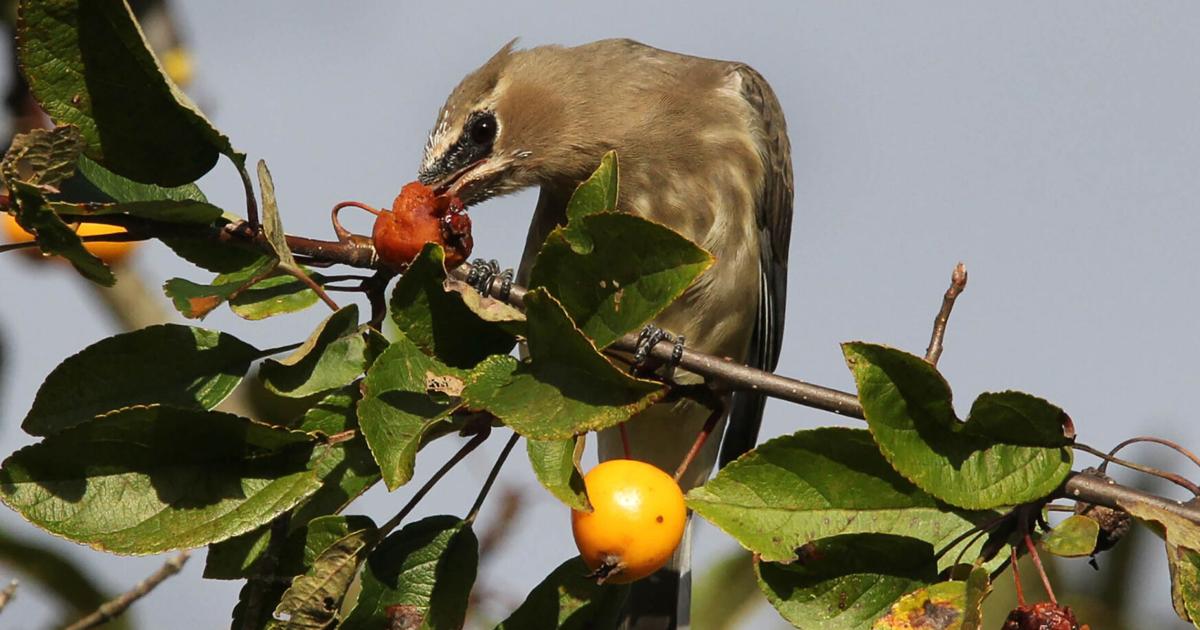Copyright keenesentinel

Sometimes, the path less traveled is the way to go. In fact, it almost always is when it comes to birdwatching. The park I frequent in southern New England features a variety of habitats: ponds, woods, fields and marshlands. The fields are quite large and have a path running through the middle. In the spring and summer, visitors are restricted to the path to protect nesting birds such as bobolinks, field sparrows and red-winged blackbirds. In fall and winter, however, after the fields have been cut, the restricted signs come down. Most people, in fact almost all people, still stick to the path as it’s the quickest and easiest way to get to the woods. They don’t see (or care about) the tremendous opportunities that exist along the brushy edges of the fields. Fall is the best time to explore the edges as berries and shelter attract birds and other wildlife. Palm warblers are automatic sightings for a few weeks in October as they devour seeds from the grasses that remain standing. Yellow-rumped warblers are also reliable sightings as they chow down on poison ivy berries and the fruits of other plants. Eastern bluebirds and eastern phoebes like to hang out around the edges as well. They use the overhanging branches to scan the field for insects. The other day, I noticed a flock of birds in a distant bare tree. They were flying back and forth to a nearby tree. Assuming they were starlings, I raised my binoculars to confirm. Turns out, they were cedar waxwings. Lots of them. As I got closer, I realized the tree they were flying to and from was a crabapple tree loaded with red, orange and yellow fruits. I climbed over a stone wall overgrown with all sorts of weeds and grasses for a closer look. I pulled a single deer tick off of my sweatshirt and closed the distance even more. The waxwings paid me no mind, so I approached within camera range. Surrounded by goldenrod that had gone to fluffy seed, I took some photos and observed the flock. Many of the birds were youngsters, hatched a few months prior. Waxwings nest a bit later than most songbirds, so the immature birds were several weeks younger than the migrating first-year birds that passed through the area in September or early October. Immature cedar waxwings lack the polished, silky look of the adults. They appear much duller and have streaked undersides. The black mask is not as obvious as in adults, and they lack the trademark waxy, red wingtips. (Not all adults have obvious wing tips either.) They do sport the yellow-tipped tail. The waxwings feasted on the apples. The apples were small but still much too large for the birds to eat in one gulp. Rather, they contorted themselves and took meaty bites of the fruits until only the stem remained. I came across an interesting tidbit while researching cedar waxwings recently. According to the Cornell Lab of Ornithology, waxwings specialize in eating fruit and can live on fruit alone for several months. Brown-headed cowbirds that are raised by waxwings often do not survive because of the all-fruit diet. The remainder of the walk was filled with sightings of white-throated sparrows and ruby-crowned kinglets. They seemed to be around every corner. The highlight of the walk, however, was the waxwings feasting on the apples. Had I stuck to the trail, I would have missed it.



